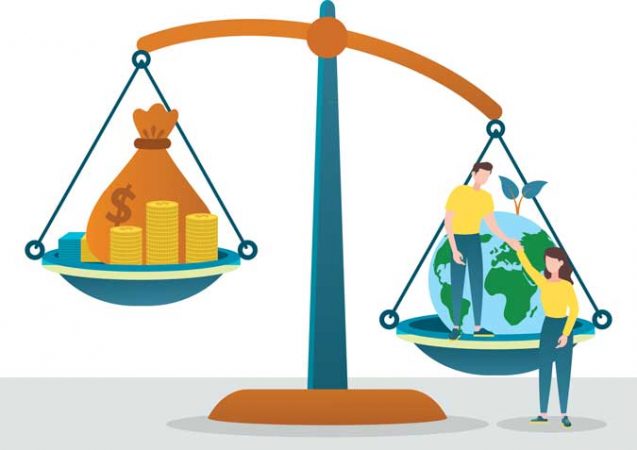
If there is anything useful about COVID-19, perhaps it is its devastating impact on the nation especially on the poor. Not for anything else, but many see it, and soon enough, many will feel and learn from it.
As a result, the civil society is now more prepared to accept the economic sense of providing income support for displaced workers especially from manufacturing and services, those whose skills would not allow them to work or conduct webinars in the comfort of their homes. Cash transfers are also vital for the very poor who have been further debased by the need for more soap and water, face masks and face shields — or otherwise risk arrest and denial of mobility. We realize now that the many years of neglect of our health sector would pay us back with nearly unbridled upsurge of COVID-19.
Bad governance that allows social inequality to persist is anathema to promoting inclusive and self-sustaining growth.
Yes, poverty alleviation in the Philippines has been showing some good progress in recent years. Poverty incidence had declined from 25.2% of the population in 2012 to 16.7% in 2018. Inflation for the bottom 30% of income households had receded from a high of 6% in 2014 to 2.7% average for the first 10 months of 2020. The percentage of households with savings had risen from 32.7% in the first quarter of 2016 to 37.8% in the first quarter of 2020, before the pandemic.
But the pandemic could be heartless. Various surveys including those by the SWS on the people’s gauge of their finances and security and the BSP’s own consumer and business expectations surveys — all good leading indicators of the national income accounts and income distribution — point to the virtual negation of such positive traces of social progress. People feel poorer and are afraid to go out even to look for work because of the virus. Consumers are not eager to go out and spend on food or personal items, while business has been intimidated from increasing capacity. Voluntary social distancing has left deep wounds and scars that could take years to completely heal.
In the Philippines, while we are proud of having achieved uninterrupted economic growth for the last 84 quarters or 21 years, moderate inflation, and turnaround in public finance and external payments position, we are now challenged to explain why one bout with Kid COVID knocked us down, not once but so far, three times. We need to reassess our institutions and policy framework to avoid a repeat of this ignominious performance.
Without doubt, the pandemic is just one of those shocks that could test the resilience of economies and civil societies. There is increasing evidence that economic growth could be more fragile, less robust in fact, when it is not inclusive and the fruits of development accrue only to the upper crust of society. The pandemic simply unmasked the sad reality of the weak support in some societies for public policies that offer better opportunities in education, health and nutrition, business and politics.
In many of our previous columns, we cited Nobel laureate Joseph Stiglitz as having traced the genesis of the Great Financial Crisis of 2008 to income inequality. Since then, economics literature has birthed work after work demonstrating the vulnerability to economic contraction of those economies with high or worsening inequality in the years and decades before the crisis.
No less than the staff of the IMF, of all international financial institutions, have arrived at a similar conclusion. For instance, IMF senior staff Jonathan Ostry, Prakash Loungani and Davide Furcere in 2018* argued against policymakers’ faith in and propensity to promote growth through supply-side measures and defer distributional issues. They considered this a dangerous gamble and proposed that simultaneous focus be given to both the size of the pie and its distribution.
Our tragic experience with the pandemic should keep us reflecting beyond the usual advocacy of reducing barriers to entry in both services and products markets, the call for greater flexibility and less friction in the labor markets and of course, adherence to the rules of globalization. We have been good students of the Fund for our own good. We supported the Fund’s past policy advice on the removal of various impediments to trade and investments and championed the increase in economic efficiency and factor productivity through, among others, a general framework of market-based liberalization and deregulation.
Of course, we were not utterly wrong in pursuing growth in this neoclassical fashion. The Fund itself found strong evidence among its member countries that structural and policy reforms were partly instrumental in attaining good economic performance. In our case, with improved business conditions, foreign investments poured in, local capitalists enjoyed greater access to bank credit, resource allocation worked, and we started on a growth roll for 21 years. Credit rating upgrades turned euphoric as our credit spreads tightened to the levels of emerging markets with higher investment grades.
Again, the problem was that a single episode with a black swan, or a fairly predictable risk event like COVID-19, was enough to bring us to our knees. We have not been that resilient and self-sustaining.
IMF’s Jonathan Ostry in Finance and Development of June 2018 argued that growth and inclusion do not have to be mutually exclusive. “With the right policies, countries can pursue both objectives.”
Otherwise, we risk going through a vicious cycle between secular stagnation, when demand is persistently deficient, and secular exclusion, when growth benefits only those in the upper layer of income distribution, precisely because the many who are poor and are at the bottom do not have what it takes to support demand and promote growth.
We dread what will happen next.
Good indicators do not lie.
They show many businesses going under water and closing down especially in many malls across the archipelago, consumer and business sentiments remaining pessimistic this quarter and the next quarter, or even the next 12 months. What else is the meaning of the survey of senior loan officers indicating tighter lending standards and BSP data revealing still elevated lending rates? Or high frequency indicators of Google, Apple, and Waze still showing limited mobility?
It will be helpful especially for economists in the public sector to consider reassessing their infatuation with another Nobel laureate, Robert Lucas, who wrote in 2003, and was quoted by Ostry: “Of the tendencies that are harmful to sound economics, the most seductive, and in my opinion the most poisonous, is to focus on questions of distribution.”
Private sector economists who are in the advocacy business will also do well to remember that if economic growth is accompanied by worsening inequality, as what seems evident following the pandemic, economic costs could be very excessive. The public treasury will be hard pressed to produce revenues from weak sources.
The point here is for policy makers and private sector supporters to advance policy reforms with complete staff work on both their implications on growth and efficiency as well as on distribution and social equity. It is in this spirit that we hope CREATE can create more space for growth as well as for social equity.
Indeed, some policy changes do give rise to sensitive growth-equity trade-offs. The Fund staff, for instance, argued that liberalizing the capital account while increasing growth, could also aggravate inequality. We agree with their suggestion that it would not be correct to reverse the reform but instead to improve the initial design of policy in order to achieve a more broad-based and broadly-shared economic growth. Inclusive growth does not have to be singularly skewed.
The issue of minimum wage is another. It makes no sense to violate the law and depress the annual adjustment on the ground that it discourages business. What is important is to allow wage gains in line with productivity increases. Better wage agreement would somewhat prosper the labor sector and fuel consumption expenditure. During this pandemic, it cushions the sorrow of the working class, and provides one answer to slow business. Empirical studies show that minimum wage hikes could narrow wage disparities. If part of a broader policy, they could lead to significant poverty alleviation. There should be less reason for both physical and economic lockdown when more people have more resources to comply with health protocols.
Failure to achieve a more inclusive, more equitable growth will give space to ultra-nationalist, populist, and protectionist advocacy. It would not be good to waste this crisis on a growth model that will not yield resiliency to last even a single round with Kid COVID.
* “Are New Economic Policy Rules Needed to Mitigate Rising National Inequalities?” in Global Rules and Inequality: Implications for Global Economic Governance, edited by Jose Antonio Ocampo. New York: Columbia University Press.
Diwa C. Guinigundo is the former Deputy Governor for the Monetary and Economics Sector, the Bangko Sentral ng Pilipinas (BSP). He served the BSP for 41 years. In 2001-2003, he was Alternate Executive Director at the International Monetary Fund in Washington, DC. He is the senior pastor of the Fullness of Christ International Ministries in Mandaluyong.

